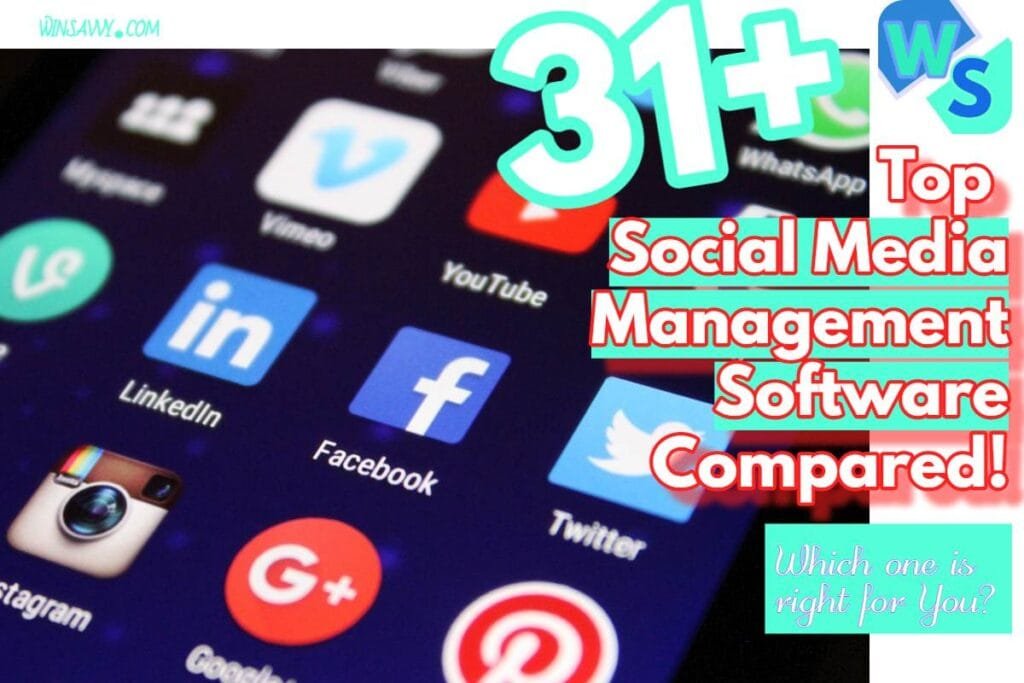Understanding Brand Loyalty
Building your brand’s market presence starts with a comprehensive understanding of what brand loyalty truly means. This foundation allows you to implement effective brand loyalty solutions.
Definition of Brand Loyalty
Brand loyalty describes a consumer’s inclination to consistently choose a specific brand despite competitive offers or challenges. This loyalty arises from the value a brand provides, often resulting from superior customer experiences that foster ongoing loyalty. For example, a consumer might prefer Monster Energy drinks over competing brands like Celsius or Red Bull, showcasing a commitment to that brand (Sprout Social).
Characteristics of Brand Loyalty
There are several key characteristics that define how customers engage with a brand in terms of loyalty. Understanding these traits can help you better tailor your marketing strategies. The five critical characteristics are:
| Characteristic | Description |
|---|---|
| Emotional Connection | Customers feel a personal attachment to the brand, enhancing their loyalty to its products. |
| Resistance to Competition | Loyal customers are less likely to switch to competing brands, even when faced with better offers. |
| Positive Word-of-Mouth | Satisfied customers promote the brand through recommendations, boosting its reputation. |
| Tolerance for Price Changes | Loyalty allows customers to overlook price fluctuations, remaining committed to the brand. |
| Repeat Purchases | Customers consistently make purchases from the brand, indicating ongoing loyalty. |
These characteristics inform how you can effectively create brand loyalty and strengthen your relationship with your customers. By leveraging these insights, you can develop strategies that not only build loyalty but also improve overall customer satisfaction, ultimately leading to increased revenue (Sprout Social).
Building Brand Loyalty
Creating effective brand loyalty solutions requires a multi-faceted approach. Your focus should be on developing brand communities, leveraging social media insights, and establishing emotional connections with your customers.
Creating Brand Communities
Building a brand community presents a major opportunity to cultivate loyalty, particularly as more individuals turn to digital spaces for connection and conversation. By fostering these communities, you can facilitate high-quality engagement and gather valuable customer insights (Sprout Social).
Benefits of brand communities include:
| Benefit | Description |
|---|---|
| Enhanced customer relationships | Customers engage with each other and direct interactions with the brand. |
| Increased brand loyalty | Community involvement often leads to deeper emotional connections with the brand. |
| Valuable feedback opportunities | Direct insights from engaged users can guide future improvements. |
Encouraging active participation through forums, social media groups, or exclusive brand events can strengthen ties and drive loyalty.
Leveraging Social Media Insights
Utilizing social media insights is crucial in maintaining and building brand loyalty. By analyzing social media analytics, you can keep abreast of customer preferences and trends (Sprout Social). This enables you to tailor your messaging and content to resonate with your audience effectively.
Key strategies include:
| Strategy | Description |
|---|---|
| Audience analysis | Understand demographics, interests, and behaviors of your audience to create relevant content. |
| Engagement metrics | Track likes, shares, and comments to gauge customer sentiment and adjust content accordingly. |
| Feedback monitoring | Pay attention to customer comments and messages to respond and adapt in real-time. |
Investing in robust analytics tools can help ensure your messaging aligns with consumer needs and preferences, maintaining customer loyalty.
Establishing Emotional Connections
Establishing emotional connections with your customers is essential for fostering long-term loyalty. Brands that engage their audiences with a genuine voice and tone can create meaningful relationships. For instance, Slack, a business messaging tool, has effectively reinforced its distinctive tone, displaying warmth and care in its interactions, which has endearingly connected with its audience (Sprout Social).
To achieve emotional connections, consider these approaches:
| Approach | Description |
|---|---|
| Authentic storytelling | Share your brand’s journey, challenges, and values to resonate with your audience. |
| Customer-centric campaigns | Focus on initiatives that prioritize customer needs and experiences rather than just promotions. |
| Personalized interactions | Utilize data to offer tailored communications that reflect individual preferences and interests. |
Creating emotional connections enhances the overall customer experience and incentivizes loyalty. To maximize effectiveness, regularly monitor the impact of your initiatives through brand loyalty metrics, allowing you to refine your strategies over time.
Customer Loyalty Programs
Customer loyalty programs are effective tools for enhancing brand loyalty. These programs incentivize repeat purchases and foster long-term relationships with your customers. Here, we will discuss three prominent types of loyalty programs: points-based, tier-based, and paid loyalty programs.
Points-Based Loyalty Programs
Points-based loyalty programs are among the most common types in use today. They allow customers to earn points for every purchase, which can be redeemed for free products, discounts, or exclusive perks (CleverTap). This system encourages repeat business and provides a clear incentive for customers to return.
| Reward Level | Points Required | Reward Offered |
|---|---|---|
| Silver | 100 | 10% off next purchase |
| Gold | 250 | Free product |
| Platinum | 500 | Exclusive event access |
Tier-Based Loyalty Programs
Tier-based loyalty programs are designed to motivate customers to spend more to achieve higher rewards based on their rank. This structure often encourages increased engagement with the brand, as customers aim to reach the next tier for additional benefits (CleverTap). The idea is to create a sense of exclusivity, rewarding your most loyal customers.
| Tier Level | Annual Spend Requirement | Benefits |
|---|---|---|
| Bronze | $0 – $499 | Basic rewards |
| Silver | $500 – $999 | 15% off, priority support |
| Gold | $1,000+ | 25% off, exclusive previews |
Paid Loyalty Programs
Paid loyalty programs require customers to pay a fee to join, granting them immediate access to various benefits. This model has proven effective in driving customer spending, as members often feel they should get value for their investment (CleverTap). By offering exclusive deals, early access to new products, or members-only sales, you can make the fee worthwhile for your customers.
| Membership Fee | Benefits | Example Program |
|---|---|---|
| $30/year | 20% off, free shipping | VIP Membership Club |
| $50/year | 30% off, exclusive items | Premium Loyalty Plan |
These customer loyalty program types can significantly impact your brand’s overall loyalty strategies. Understand how these programs can be tailored to meet the unique needs of your audience by exploring more about brand loyalty programs. Effective management of these programs can lead to increased customer retention, enhanced brand perception, and ultimately, improved profitability. Consider integrating unique features and ongoing evaluation of customer engagement through tools for customer loyalty management to maximize benefits. For deeper insights into the effectiveness of these strategies, review our brand loyalty statistics.
Case Studies in Brand Loyalty
Examining real-world examples of brand loyalty can provide valuable insights for your business. Below are three noteworthy case studies that illustrate successful strategies in fostering brand loyalty.
Slack: Nurturing Loyalty
Slack, the widely-used business messaging platform, has distinguished itself in the crowded communication marketplace. Its success in building brand loyalty stems from its ability to create genuine connections with users. The company reinforces its unique voice and tone by approaching interactions with warmth and care. This strategy not only makes users feel valued but also cultivates a sense of community around the brand.
Slack’s focus on user experience has resulted in enhanced customer satisfaction and loyalty. They continuously gather feedback and insights from their users to refine their offerings. By being responsive to their audience, Slack has established a loyal customer base that advocates for the platform, leading to organic growth through positive word-of-mouth.
Macy’s: Loyalty Program Success
Macy’s has successfully implemented a robust brand loyalty program that has proven effective in retaining customers. Their program offers multiple benefits, which include special discounts, exclusive offers, and early access to sales events. The tier-based rewards system encourages customers to spend more to unlock higher levels of perks.
The success of Macy’s loyalty program is corroborated by increasing customer engagement and repeat purchases. Their approach to personalization—tailoring promotions based on shopping history—has significantly improved brand loyalty metrics. By analyzing brand loyalty statistics, Macy’s has demonstrated that an effective loyalty program can lead to improved customer retention and strengthened emotional connections to the brand.
| Key Metrics | Before Loyalty Program | After Loyalty Program |
|---|---|---|
| Customer Retention Rate | 60% | 75% |
| Average Spend per Customer | $150 | $250 |
| Customer Satisfaction Score | 70/100 | 85/100 |
Unilever’s Dove: Fostering Brand Loyalty
Unilever’s Dove brand exemplifies the power of emotional connections in cultivating brand loyalty. Dove has successfully positioned itself as a champion of real beauty and self-esteem, resonating with consumers on a personal level. Their marketing campaigns focus on authenticity and empowerment, which have endeared the brand to many customers.
Dove actively engages with its audience through community building, encouraging discussions around self-image and beauty standards. This dedication to fostering a positive environment has resulted in substantial brand loyalty. According to internal studies, users who identify with Dove’s mission are significantly more likely to repurchase and recommend the brand to others.
Dove’s success is a testament to the importance of creating shared values and emotional engagement in building lasting customer relationships.
By learning from these case studies, you can enhance your own brand loyalty initiatives. Incorporating lessons from successful brands will guide your efforts in increasing brand loyalty and securing a dedicated customer base.
Differentiating Brand Loyalty
Understanding the nuances between brand loyalty and customer loyalty is essential for developing effective brand loyalty solutions.
Brand Loyalty vs. Customer Loyalty
Brand loyalty is based on consumer perceptions of a brand and the experiences it provides. It encompasses the emotional connection a consumer feels toward a brand and can lead to long-term commitment, even in the face of competitive offers. On the other hand, customer loyalty primarily hinges on pricing strategies and short-term promotional tactics. When you focus on brand loyalty, you create a deeper relationship with your audience that transcends mere transactional exchanges.
| Aspect | Brand Loyalty | Customer Loyalty |
|---|---|---|
| Definition | Emotional attachment to a brand | Repeat purchase behavior |
| Influencing Factors | Brand image, quality, and experience | Price, promotions, and convenience |
| Connection | Long-term engagement | Short-term rewards |
Tracking Customer Loyalty
Effectively measuring customer loyalty is crucial for understanding how well your loyalty initiatives are performing. One prevalent metric used in this context is the Net Promoter Score (NPS). NPS gauges the likelihood of customers recommending your product or service to others, serving as a strong indicator of both customer satisfaction and loyalty (CustomerGauge).
Using data analytics can also enhance your tracking abilities. According to a McKinsey & Company survey, companies utilizing data analytics reported 115% higher ROI and 93% higher profits, placing them in a stronger position to manage customer loyalty and assess loyalty program effectiveness (Luxoft).
By differentiating brand loyalty from customer loyalty, you position your business to maximize engagement and ultimately drive revenue growth. Consider implementing brand loyalty programs tailored to fostering both emotional connections and repeated purchases for sustained success.
Strategies for Creating Customer Loyalty
Developing effective strategies for enhancing customer loyalty can significantly impact your brand’s success. By focusing on exceptional customer service, building brand trust, and committing to continuous improvement, you can foster a loyal customer base that will advocate for your brand.
Providing Exceptional Customer Service
Exceptional customer service is a cornerstone of customer loyalty. Research shows that excellent service, effective communication of company values, and engaging loyal customers are paramount in fostering brand attachment (Zendesk). Your team should be trained to not only meet but exceed customer expectations in every interaction.
Here are some practices to implement:
- Timely Responses: Ensure inquiries and complaints are addressed promptly.
- Personalized Interactions: Tailor your approach to meet individual customer needs and preferences.
- Follow-ups After Service: Reach out to customers after their purchase or interaction to show that you value their feedback.
Building Brand Trust
Establishing trust with your customers is crucial in retaining their loyalty. Trust can be built by consistently delivering on promises and maintaining transparency in your business practices.
Consider the following tactics:
- Showcase Reviews and Testimonials: Highlight positive customer experiences through testimonials, reviews, and case studies to strengthen credibility.
- Social Media Engagement: Use social media platforms to engage directly with your customers, address their concerns, and showcase your brand’s personality.
- Quality Assurance: Always ensure that your products meet high quality standards and rectify any shortcomings immediately.
You can learn more about the various factors influencing brand loyalty and the relationship between trust and loyalty.
Continuous Improvement for Customer Experience
Focusing on continuous improvement in the customer experience will help you stay ahead of competitors and keep your loyal customers satisfied. Regularly assess and refine your processes to meet evolving customer expectations.
Implement these strategies:
- Solicit Customer Feedback: Utilize surveys and reviews to gather insights on customer experiences and areas for enhancement.
- Analyze Customer Behavior: Use data analytics to understand shopping patterns and preferences, allowing for more targeted marketing efforts (PropelloCloud).
- Implement AI Solutions: Consider utilizing AI technology to improve customer engagement and retention through personalized experiences and targeted rewards.
These strategies engage your customers and help them feel valued throughout their journey with your brand. For additional insights into maintaining and enhancing brand loyalty, explore our resources on customer loyalty management and brand loyalty statistics.
Incorporating AI in Loyalty Programs
Integrating artificial intelligence (AI) into loyalty programs can significantly enhance customer engagement and ultimately boost brand loyalty. Leveraging data analytics allows businesses to create more individualized experiences that resonate with consumers, leading to higher satisfaction and increased retention.
AI’s Impact on Customer Engagement
AI-powered loyalty programs drive increased customer engagement, retention, and lifetime value by providing targeted rewards and personalized experiences (PropelloCloud). By analyzing customer behavior, preferences, and purchase history, AI can identify patterns that inform marketing strategies and engagement tactics. For instance, businesses can deliver relevant promotions and rewards that cater specifically to each customer’s interests.
Retailers can create seamless shopping experiences across various channels—online, mobile, and in-store—by utilizing AI capabilities. This multi-channel approach ensures that customers feel connected to the brand, which enhances their overall experience. Below is a table showcasing the benefits of AI in customer engagement.
| Benefit | Description |
|---|---|
| Personalized Interactions | Tailored experiences based on consumer data. |
| Increased Retention | Boosts customer loyalty through targeted outreach. |
| Enhanced Satisfaction | Improves the shopping experience, leading to happier customers. |
Personalization and Customer Loyalty
Personalized marketing and customer experiences driven by data analytics can lead to hyper-personalized retail encounters that foster customer loyalty and increase satisfaction. According to McKinsey, 71% of consumers expect personalized interactions, underscoring the need for brands to implement AI-driven strategies to meet these expectations.
Utilizing data analytics allows businesses to highlight personalized marketing content and targeted engagement approaches. This targeted engagement can make customers feel valued and recognized, leading to increased store loyalty and overall satisfaction (Luxoft). By adopting AI-integrated tools, businesses can enhance their marketing strategies and personalization efforts, as exemplified in the following table.
| Strategy | Description |
|---|---|
| Targeted Rewards | Offering promotions that align with individual customer interests. |
| Predictive Analytics | Anticipating customer needs based on previous data. |
| Cross-Channel Consistency | Ensuring a uniform customer experience across platforms. |
Incorporating AI in your loyalty programs not only streamlines the marketing process but also contributes to long-term brand loyalty. By focusing on personalization and engaging customers in meaningful ways, you will position your brand for sustained success in a competitive landscape. For additional insights into effective loyalty strategies, consider exploring brand loyalty statistics and customer loyalty trends.
Enhancing Customer Engagement
Increasing customer engagement involves adopting strategies that make interactions with your brand more meaningful and personal. Two essential aspects of this are understanding the benefits of customer engagement and recognizing the importance of personalization.
Benefits of Customer Engagement
Effective customer engagement yields numerous advantages for your brand. Engaged customers are more likely to convert, make repeat purchases, and promote your brand through word-of-mouth. Here are some key benefits:
| Benefit | Description |
|---|---|
| Higher Customer Retention | Engaged customers are less likely to switch to competitors. |
| Increased Average Order Value (AOV) | Repeat customers spend about seven times more than new shoppers, indicating that engagement efforts pay off in purchases. |
| Enhanced Brand Loyalty | Customers who feel engaged with your brand are more likely to develop loyalty and advocacy. |
| Greater Brand Awareness | Engaged customers often share their experiences, amplifying your brand’s visibility. |
Running social media competitions is one method to enhance customer engagement, encouraging customers to interact with your brand by sharing, retweeting, and tagging others. This strategy not only boosts customer interaction but also amplifies brand awareness (Dotdigital).
Importance of Personalization
Personalization plays a crucial role in customer engagement strategies. By tailoring marketing messages and customer experiences based on individual preferences, behaviors, and needs, you can create a more engaging environment. Key aspects of personalization include:
| Personalization Aspect | Description |
|---|---|
| Targeted Marketing Content | Data analytics can help showcase personalized marketing messages, dynamically presenting offers that resonate with your customers (Luxoft). |
| Customized Customer Interactions | Personalized experiences can extend across various channels, including online, mobile, and in-store, leading to a seamless shopping experience. |
| Acknowledgment of Customer Preferences | When customers feel their preferences are recognized, they are more likely to engage positively with your brand. |
Hyper-personalized retail experiences improve customer loyalty and contribute to higher satisfaction levels. By providing relevant offers and recommendations based on past behavior, you invite customers to connect with your brand on a deeper level (Luxoft).
Investing in customer engagement and emphasizing personalization can enhance your brand loyalty solutions, ultimately leading to long-term success. For more insight into enhancing customer loyalty, check out our resources on brand loyalty programs and customer loyalty strategies.





















